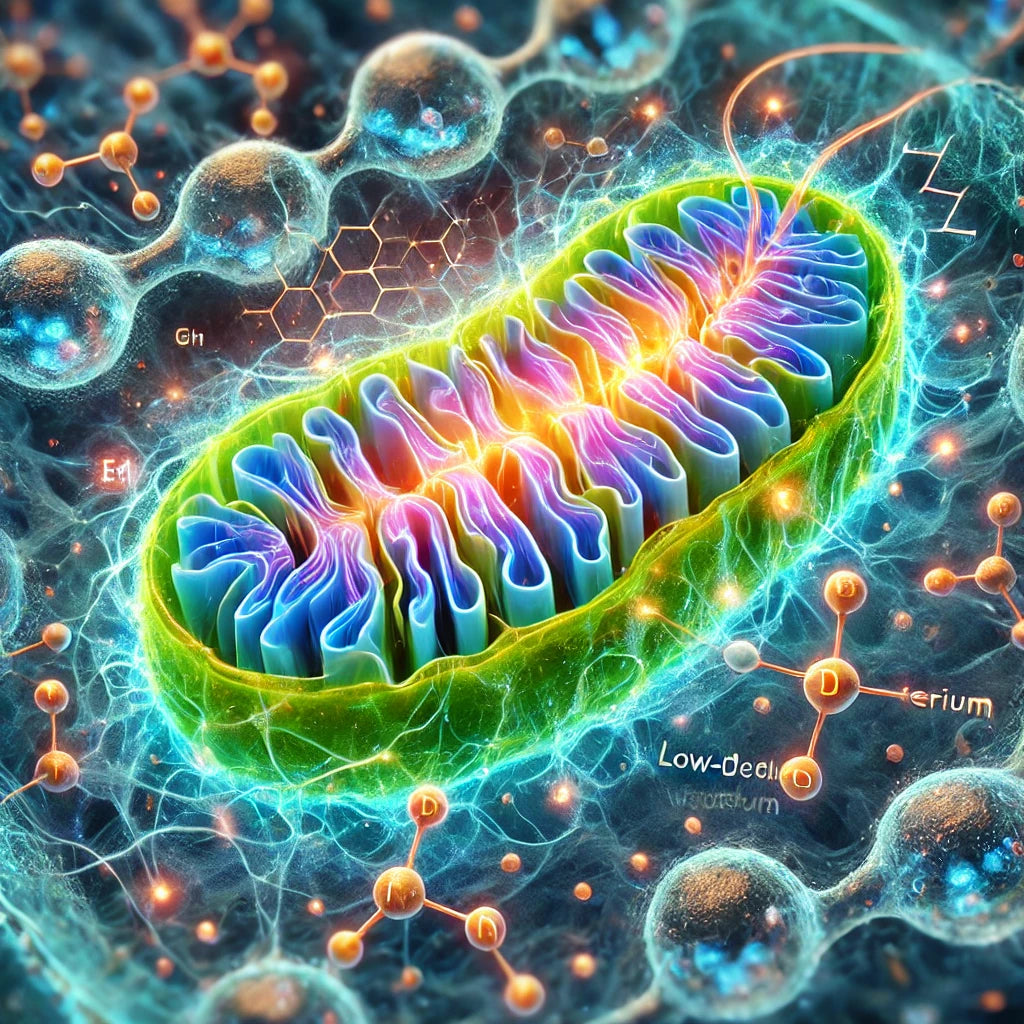
Mitochondria's Quantum Leap: Harnessing the Power of Low-Deuterium Water
Deep within the cells that make up our bodies, a remarkable organelle known as the mitochondrion is quietly revolutionizing our understanding of cellular energy production. These so-called "powerhouses" of the cell may possess an extraordinary capability – the ability to harness a special quantum mechanical phenomena to generate ATP, the fundamental unit of energy, in ways that defy classical physics.
At the heart of this intriguing theory is the role of a subtle but significant variation of the hydrogen atom: deuterium. Deuterium, a heavier isotope of hydrogen, is present in small amounts in regular water (H2O), but emerging evidence suggests that mitochondria may have the capacity to preferentially select, make their own, and then utilize low-deuterium water. This ability could not only innately help the body produce more energy but it also allows something even more wild: to unlock quantum tunneling effects that dramatically amplify the energy-producing reactions happening (inside all life, even cellular power plants).
The Quantum Advantage
Quantum tunneling is a quantum mechanical effect where particles can essentially "tunnel" through barriers that they shouldn't be able to based on classical physics. If mitochondria can create an environment conducive to quantum tunneling with low-deuterium water, it could radically improve the efficiency of ATP production.
The Unique Properties of Water
Water is a remarkable molecule with unique quantum mechanical properties that make it integral to many biological processes. The hydrogen bonds between water molecules, for example, allow for the formation of complex structures and the transport of protons, which are crucial for energy production in mitochondria.
Deuterium, with its larger atomic mass, can disrupt these delicate quantum water-based processes. Deuterium is known to impede quantum tunneling processes due to its higher density and atomic mass compared to regular hydrogen. This can interfere with the efficient movement of protons and other charged particles through the mitochondrial membranes.
Deuterium Depletion and Quantum Battery Production
By excluding the heavier deuterium atoms, these tiny "Mighty Mitos" may use quantum mechanical properties of the water that can be leveraged to the cell's energetic advantage. Without the "blocking" effect of deuterium in the water they produce, protons and other charged particles can more easily tunnel through membrane barriers (in and out) and partake in the energy-producing chemical processes inside the mitochondria. This could significantly streamline ATP synthesis compared to the classic stepwise model.
Mitochondria may have specialized mechanisms to preferentially select and concentrate low-deuterium water, creating pockets within the mitochondria that are optimized for quantum tunneling to occur during energy production. This could allow for a more direct and efficient 'quantum battery' production process, where ATP is generated at a much higher rate than traditional pathways.
How Quantum Batteries Work
A quantum battery is an innovative type of energy storage device that uses principles of quantum mechanics to store and release energy efficiently. Unlike traditional batteries, which rely on chemical reactions, quantum batteries operate by manipulating quantum states within particles.
The Basics of Quantum Energy Storage
Quantum batteries take advantage of the fact that particles, like electrons, can exist in multiple states at once, known as superposition. This means that energy can be stored and transferred between states without losing energy to heat or friction, which often happens in classical batteries.
How Do Quantum Batteries Charge and Discharge?
When a quantum battery is in a superposition state, energy can be transferred very quickly and efficiently. When charged, these states are maintained in a stable manner, ready to release energy when needed. The entanglement of particles, another quantum property, allows energy to be stored and transferred simultaneously across the battery's entire structure, making the charging and discharging process much faster.
Implications for Life and Health
The potential implications of this proposed mitochondrial quantum energy production are staggering. It could lead to breakthroughs in fields ranging from cellular bioenergetics to neuroscience, and even have profound implications for our understanding of the origin and evolution of life on Earth.
Enhancing mitochondrial quantum efficiency could potentially slow or even reverse the bioenergetic decline we see in neurodegenerative diseases. By optimizing ATP production at the cellular level, we may be able to prevent or delay the onset of devastating neurological conditions.
Moreover, the ability to harness quantum water processes through low-deuterium water could have far-reaching implications for all life on Earth, including plants. If mitochondria can truly leverage these quantum effects, it could fundamentally change our understanding of how energy is produced and distributed throughout living systems. This could have profound implications for fields like bioenergy, agriculture, and even the origins of life itself.
The Future of Cellular Bioenergetics
As researchers continue to investigate the quantum nature of biological systems, the mitochondria's potential to leverage these phenomena for enhanced energy production remains an exciting frontier of scientific exploration. The future of cellular energetics may lie in embracing the strange and counterintuitive world of quantum mechanics.
This is still a highly speculative and controversial area of research. We need much more evidence and a deeper understanding of the underlying quantum processes before we can say with confidence that mitochondria are harnessing quantum tunneling. But the potential is there, and it's worth pursuing vigorously.
Whether mitochondria's quantum secrets will be unlocked in the near future or remain elusive for years to come, one thing is certain: the humble mitochondrion continues to surprise and inspire us, hinting at the profound complexity and wonder of the living cell. As we delve deeper into the quantum realm of biology, the path to a more comprehensive understanding of cellular energy production may well lie in the mitochondria's embrace of the strange and the seemingly impossible.
